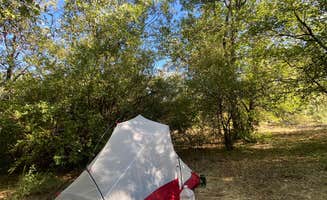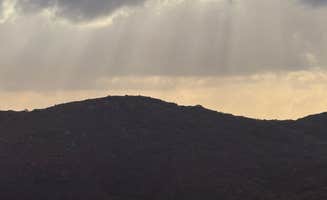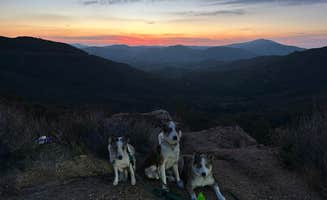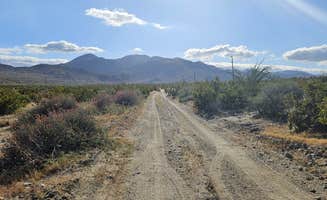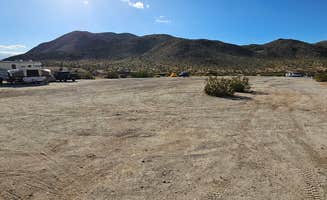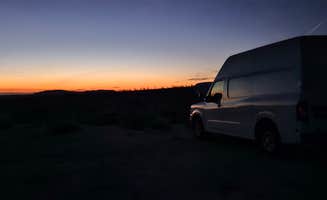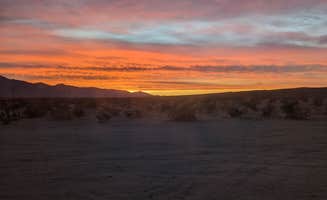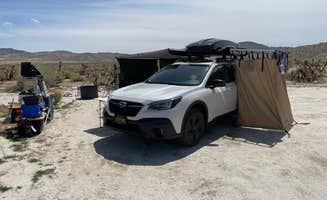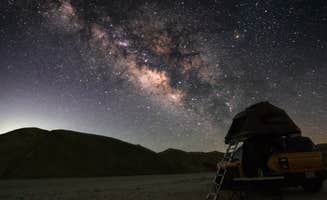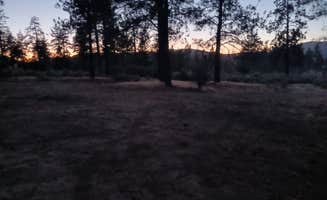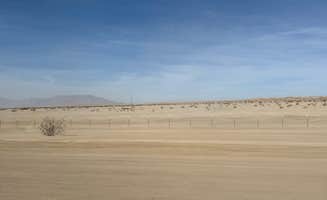Dispersed camping near Ramona, California offers direct access to both desert badlands and mountain terrain, with elevations ranging from 600 to 3,000 feet across the region. The transition zone between mountain and desert creates unique conditions where temperature differentials can exceed 30°F between camping areas that are only 15 miles apart. Most primitive sites remain accessible year-round but require advance planning for extreme temperature management.
What to do
Explore cave systems: At Arroyo Tapiado Mud Caves, visitors can explore extensive mud cave formations, but should come prepared. "There are more than five different areas to camp in this box canyon. The caves are cool, dark, and spooky! No matter how hot it is in the desert the caves are always about 60F," notes camper Dyl A.
Stargaze with minimal light pollution: The dark sky designation makes nighttime viewing exceptional, particularly at higher elevations. "We were able to see so many stars and constellations. We saw shooting stars nearly every minute and we were also able to find Mars, Jupiter, Saturn, Uranus, and Neptune all with the naked eye!" reported E. from Blair Valley Primitive Campground.
Visit metal sculptures: Some camping areas feature unique art installations. At Galleta Meadows, campers can enjoy distinctive iron sculptures in their natural setting. "The area is renowned for its hiking and other outdoor activities. It is also known for its iron sculptures, which many exist within this camp area," explains Abe C.
What campers like
Solitude and space: Many dispersed camping areas provide significant distance between sites. A camper at Pine Creek Road Camp mentioned, "We only spent one night but we never saw another person during our stay." The spacing between sites ranges from 15 feet to over 500 feet depending on location.
Temperature variations for seasonal planning: Desert locations offer cooler options during shoulder seasons. "Temps averaged 70-75 during the day and dropped to 38-42 at night but with a small fire and proper gear, we were plenty comfortable," explained a Blair Valley camper, making it ideal for fall and spring visits.
Safety from natural features: Campers advise keeping distance from certain terrain elements. At Arroyo Tapiado Mud Caves, one reviewer cautioned, "DO NOT PARK CLOSE TO THE DIRT WALLS. (Mostly the overhanging ones) During the night I was out there, high winds brought down a huge chunk that we had passed on the way in."
What you should know
Permit requirements vary: Some areas require advance permits even for free camping. For Pine Creek Road Camp, a camper advised, "Make sure you apply for the free permit a few days in advance especially if you plan to go on the weekend. List the place you're going as 'Pine Creek dispersed camping,' and keep a printed copy in your car."
Cell service limitations: Connectivity varies significantly by location and carrier. "I had zero Verizon signal," noted Jeffrey F. about Blair Valley, while another camper reported, "AT&T had no service whatsoever on low ground, but was strong if you went up the mountain" at the mud caves area.
Road conditions and vehicle requirements: Access roads range from well-maintained to challenging. At Yaqui Wash, a visitor noted, "The stretch of dirt road closest to the main road is sandy, but manageable in a two wheel drive. This is where most of the campsites are. Further along the road, there are fewer camp sites...however the road becomes more rocky and jutted."
Tips for camping with families
Cactus safety precautions: Desert vegetation requires careful navigation with children. "Watch out for cactus and needles that are buried in the sand. It is not recommended to bring dogs or walk barefoot for this reason," warned a Blair Valley visitor whose footwear collected numerous needles during their stay.
Best time windows for comfortable camping: Plan family visits during moderate temperature periods. "We tend to get away here in fall and winter months; it's just too hot otherwise," advised Jennifer D., noting that desert temperatures can become unsuitable for family camping during summer months.
Easy-access locations for first-timers: Some areas offer simpler access for families new to primitive camping. At Granite Springs, one camper reported, "Primitive camp site with chemical bathrooms. Has 3 areas to set up tents. First come first serve, but you must check in at the ranger station before you go. $5 per camper. We comfortably fit 3 tents on one site."
Tips from RVers
Site selection for larger vehicles: RV access varies substantially across dispersed areas. "We stayed at Little Blair Valley...the road is a bit narrow but well maintained and there were plenty of trailers out there. Probably wouldn't take anything too too big," noted Brittany K., suggesting caution for larger rigs.
Sand management for extended stays: Vehicles with limited clearance should avoid deeper sand areas. At the mud caves, Brett S. advised, "We are novice campers - didn't have sand tent pegs so with a little wind on the day we arrived it took some time to find the right site for us." For RVs, this means parking on firm ground to avoid getting stuck.
Camping etiquette in popular areas: RVers should be mindful of established sites. At Galleta Meadows, one camper recommended, "Please use existing pull outs. Keep it clean so we can continue to enjoy this free spot. It's one road in. The further back you go, the more privacy."


